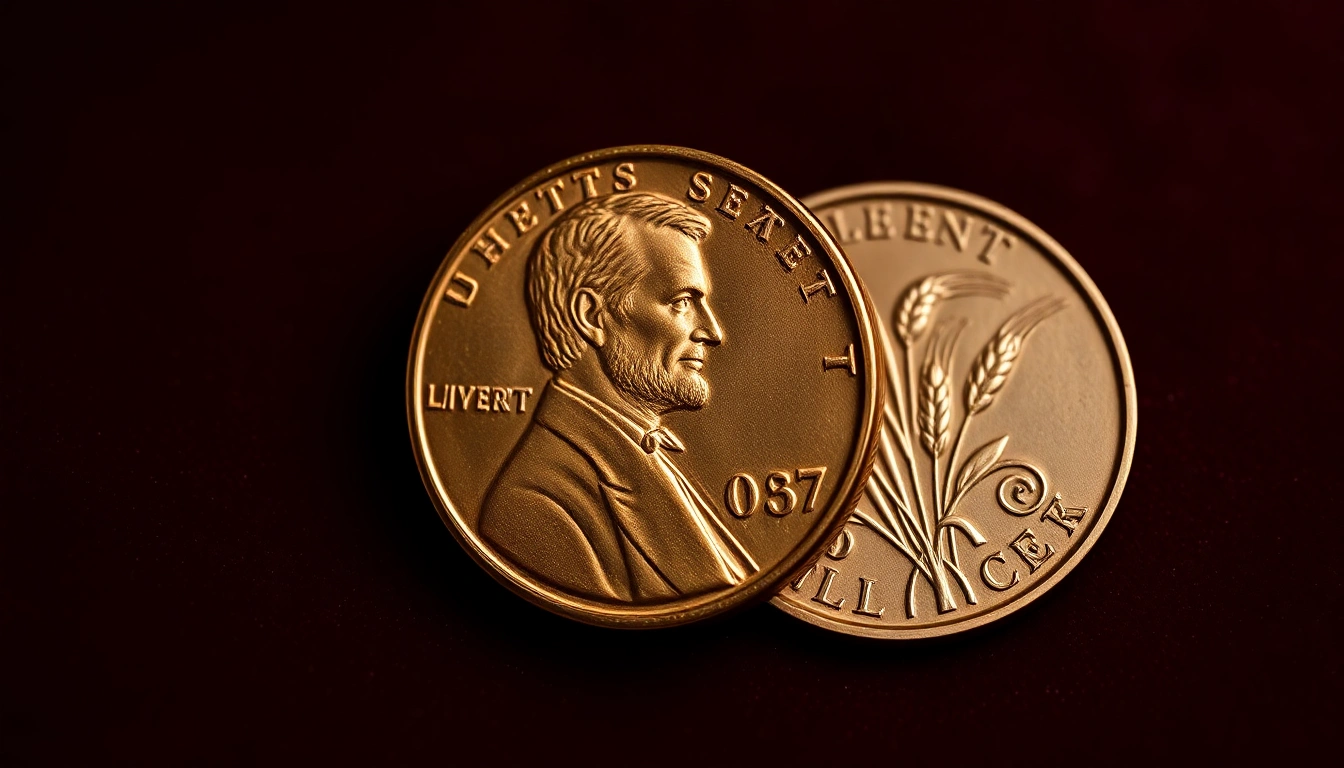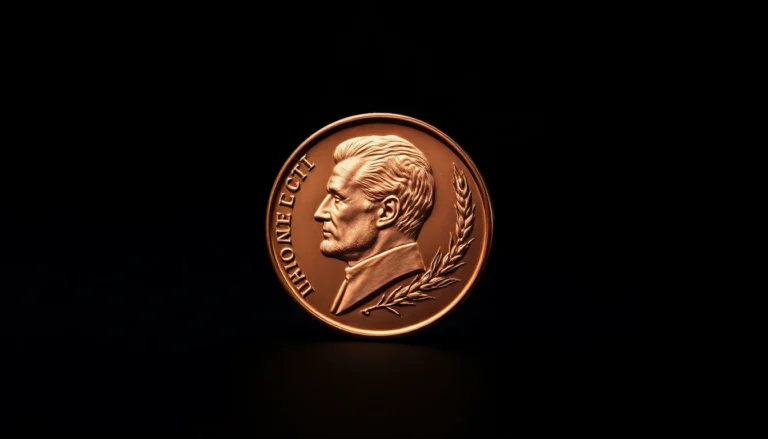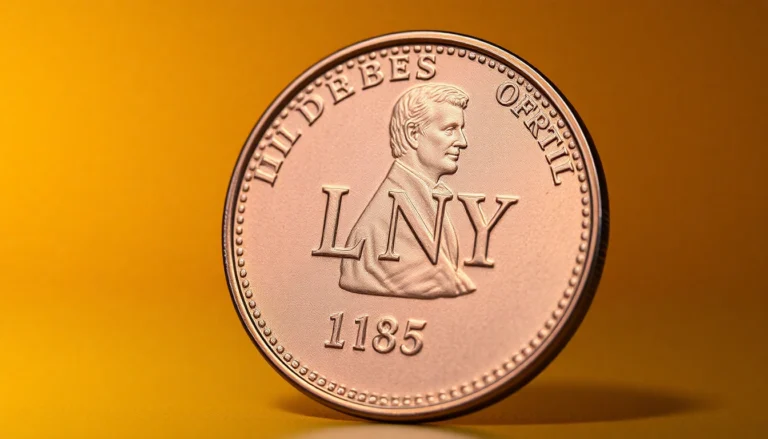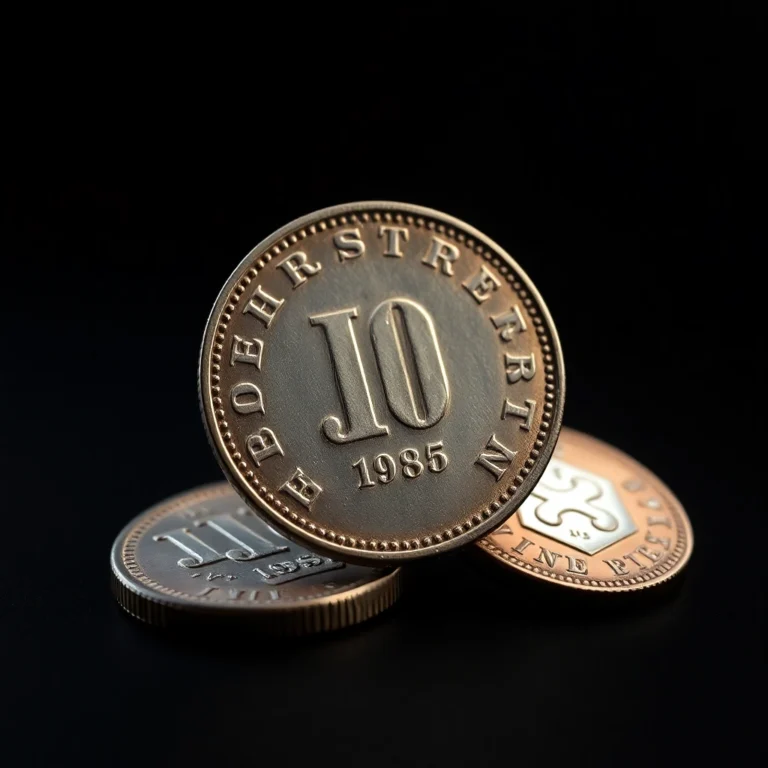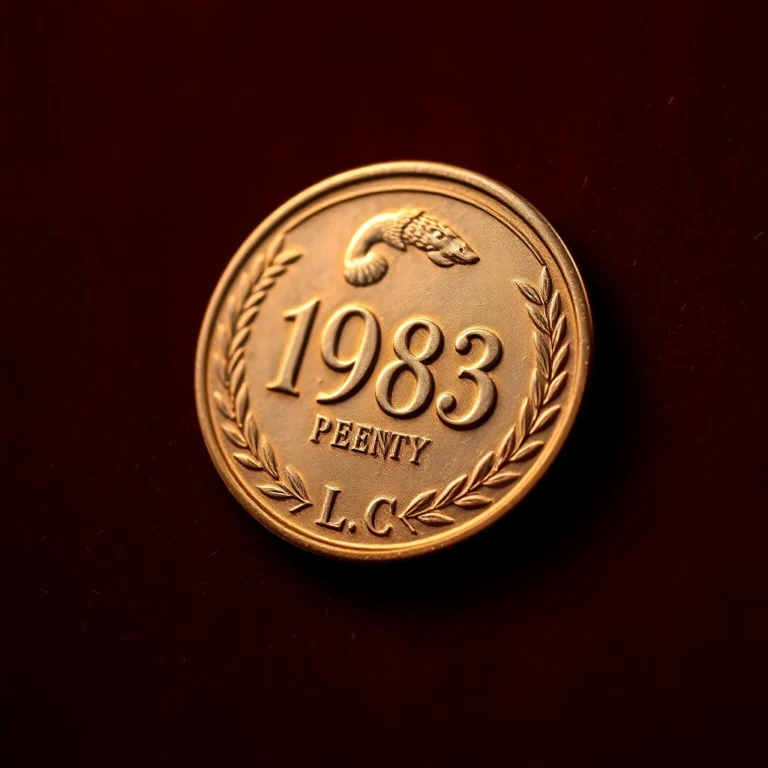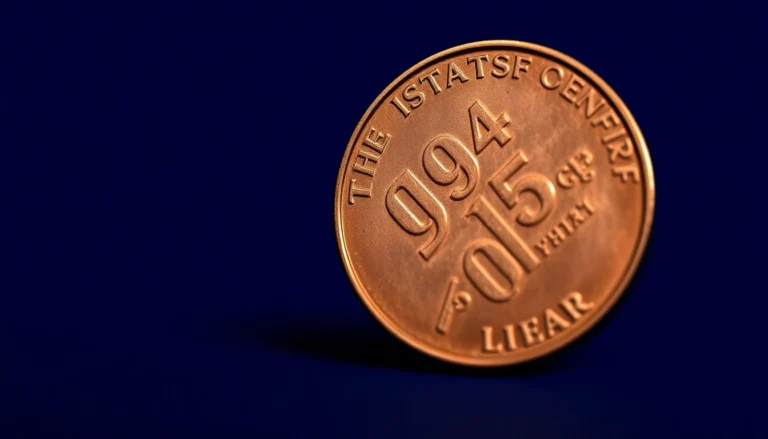Imagine holding a small piece of history in the palm of your hand, a rare treasure that has captivated collectors for generations. The Lincoln Wheat Penny, minted from 1909 to 1958, is one such gem, a beloved staple in the numismatic world that often sparks the thrill of the hunt. These humble coins, with their iconic wheat stalks and the likeness of Abraham Lincoln, have become more than just currency; they are cherished artifacts that can command impressive sums at auction.
For avid collectors and newcomers alike, understanding which Lincoln Wheat Pennies are worth big money is crucial. In this article, you’ll uncover the secrets behind ten of the rarest and most valuable Lincoln Wheat Pennies that could transform your collection. Each of these coins tells a unique story, from minting errors to limited editions, making them irresistible to collectors who appreciate both history and rarity.
Join us on a journey through the top ten Lincoln Wheat Pennies that could potentially turn a modest collection into a treasure trove. Who knows, you might just discover a valuable coin hiding in your own change jar!
1. 1909-S VDB Lincoln Cent
The 1909-S VDB Lincoln Cent is one of the most coveted coins among numismatists and stands as a cornerstone of any serious Lincoln Wheat Penny collection. Introduced in 1909, this coin marks the beginning of the Lincoln Cent series, designed by Victor David Brenner. The “S” mint mark signifies its origin from the San Francisco Mint, while “VDB”, Brenner’s initials, discreetly adorn the reverse, making it a key identifier for collectors. This cent’s allure stems from its limited mintage of only 484,000, a factor that significantly boosts its desirability and value. 🪙
| Grade | Value Range |
|---|---|
| Good (G-4) | $700-$900 |
| Very Good (VG-8) | $900-$1,100 |
| Fine (F-12) | $1,100-$1,300 |
| Very Fine (VF-20) | $1,500-$1,800 |
| Extremely Fine (EF-40) | $2,000-$2,500 |
| About Uncirculated (AU-50) | $3,000-$3,500 |
| Mint State (MS-60) | $4,500-$5,500 |
| Gem Mint State (MS-65) | $10,000-$15,000 |
2. 1914-D Lincoln Cent
The 1914-D Lincoln Cent is a cornerstone of any serious wheat penny collection, known for its rarity and historical significance. Minted in Denver, this coin is one of the most sought-after pieces among collectors, primarily due to its low mintage of just over 1.1 million. This scarcity, combined with its age, makes it a valuable find 💰.
Key identifying features of the 1914-D include the distinctive “D” mintmark located below the date on the obverse. Collectors should look for clear and well-defined details, such as the wheat stalks on the reverse, as these significantly impact the coin’s grade and value.
While there are no major varieties or errors known for the 1914-D, its condition heavily influences its market value. Below is a table that outlines the typical value range for different grades:
| Grade | Value Range |
|---|---|
| Good (G-4) | $150-$200 |
| Very Good (VG-8) | $200-$300 |
| Fine (F-12) | $300-$400 |
| Very Fine (VF-20) | $400-$600 |
| Extremely Fine (EF-40) | $600-$900 |
| About Uncirculated (AU-50) | $900-$1,500 |
| Mint State (MS-60) | $1,500-$2,500 |
| Gem Mint State (MS-65) | $3,000-$5,500 |
3. 1922 No D Lincoln Cent
Among the most intriguing coins in the realm of numismatics is the 1922 No D Lincoln Cent. This penny captivates collectors due to its unique history and scarcity. Produced during a period of economic restraint, the Denver Mint was the sole mint producing Lincoln Cents in 1922. Due to a die issue, some of these coins were struck without the mint mark ‘D’, making them highly sought-after by enthusiasts today. 🪙
The 1922 No D Lincoln Cent is identified by its lack of a mint mark below the date, an anomaly for coins struck in Denver. These coins fall under several die pair varieties, with Die Pair 2 being the most coveted due to its sharp strike and clear details.
| Grade | Value Range |
|---|---|
| Good (G-4) | $650-$750 |
| Very Good (VG-8) | $900-$1,100 |
| Fine (F-12) | $1,300-$1,500 |
| Very Fine (VF-20) | $2,000-$2,400 |
| Extremely Fine (EF-40) | $3,500-$4,200 |
| About Uncirculated (AU-50) | $6,000-$7,500 |
| Mint State (MS-60) | $12,000-$15,000 |
| Gem Mint State (MS-65) | $25,000-$30,000 |
This coin not only represents a fascinating minting error but also serves as a testament to the ingenuity of collectors who have kept this piece of history alive. Owning a 1922 No D Lincoln Cent is akin to holding a tangible piece of numismatic lore. 💰
4. 1931-S Lincoln Cent
The 1931-S Lincoln Cent is a treasured gem in the world of numismatics, embodying both historical significance and collectible allure. Minted during the Great Depression, this penny’s low mintage of just 866,000 makes it a highly sought-after piece for collectors today. Its scarcity and historical context contribute to its value, making it a centerpiece for any serious Lincoln Wheat Penny collection.
Key identifying features of the 1931-S Lincoln Cent include the iconic wheat stalks on the reverse and the “S” mint mark beneath the date on the obverse. While no major varieties or mint errors are known for this coin, its allure remains strong due to its limited availability and high demand. 🪙
| Grade | Value Range |
|---|---|
| Good (G-4) | $70-$90 |
| Very Good (VG-8) | $90-$120 |
| Fine (F-12) | $120-$150 |
| Very Fine (VF-20) | $150-$200 |
| Extremely Fine (EF-40) | $200-$300 |
| About Uncirculated (AU-50) | $300-$450 |
| Mint State (MS-60) | $450-$600 |
| Gem Mint State (MS-65) | $1,000-$1,500 |
5. 1909-S Lincoln Cent
The 1909-S Lincoln Cent stands as a coveted gem among numismatists, representing the inaugural year of the iconic Lincoln Wheat Penny series. With only 484,000 pieces minted, this cent is not just rare—it’s a historical cornerstone for collectors. Produced at the San Francisco Mint, the 1909-S Lincoln Cent is easily distinguished by the small “S” mintmark beneath the date, a feature that elevates its allure and value. 🪙
Collectors often seek this coin due to its limited mintage and the beginnings of the Lincoln design, which pays homage to the centennial of Abraham Lincoln’s birth. While there are no significant varieties, the coin’s condition can dramatically influence its value. Below is a comprehensive value table based on different grades:
| Grade | Value Range |
|---|---|
| Good (G-4) | $700-$850 |
| Very Good (VG-8) | $850-$1,000 |
| Fine (F-12) | $1,000-$1,200 |
| Very Fine (VF-20) | $1,200-$1,500 |
| Extremely Fine (EF-40) | $1,500-$2,000 |
| About Uncirculated (AU-50) | $2,000-$3,000 |
| Mint State (MS-60) | $3,000-$4,500 |
| Gem Mint State (MS-65) | $6,000-$10,000 |
6. 1917 Double Die Obverse Cent
The 1917 Double Die Obverse Cent is a striking example of early 20th-century minting anomalies that captivate numismatists and collectors alike. This particular Lincoln Wheat Penny error occurred when the die received a second impression, slightly misaligned with the first, resulting in a noticeable doubling of the date and some lettering on the obverse. Such errors were not uncommon in the early years of the U.S. Mint, but the 1917 Double Die stands out for its clarity and the fascination it inspires among collectors. 🪙
Identifying a genuine 1917 Double Die Obverse involves examining the date and the inscriptions “LIBERTY” and “IN GOD WE TRUST,” where the doubling is most prominent. Collectors often use magnification to confirm the doubling, which distinguishes it from other varieties of the 1917 Lincoln Cent.
| Grade | Value Range |
|---|---|
| Good (G-4) | $200-$300 |
| Very Good (VG-8) | $350-$450 |
| Fine (F-12) | $500-$700 |
| Very Fine (VF-20) | $800-$1,200 |
| Extremely Fine (EF-40) | $1,500-$2,000 |
| About Uncirculated (AU-50) | $3,000-$4,500 |
| Mint State (MS-60) | $6,000-$8,000 |
| Gem Mint State (MS-65) | $10,000-$14,000 |
7. 1924-D Lincoln Cent
The 1924-D Lincoln Cent is a fascinating piece of numismatic history, cherished by collectors for its scarcity and storied past. Minted in Denver, this coin had a relatively low mintage of 2,520,000, making it one of the key dates in the Lincoln Wheat Penny series. The 1924-D is particularly sought after due to its challenging condition rarity, with higher grades being exceptionally elusive. As you hold one, you might imagine the bustling streets of 1920s Denver, where this penny first entered circulation. 🪙
Key identifying features include the classic Wheat Ear reverse design and the ‘D’ mint mark located below the date. While no widely recognized major varieties exist for this year, collectors should be vigilant for die variations and any potential errors, which could increase the coin’s value.
| Grade | Value Range |
|---|---|
| Good (G-4) | $25-$35 |
| Very Good (VG-8) | $45-$65 |
| Fine (F-12) | $85-$125 |
| Very Fine (VF-20) | $150-$225 |
| Extremely Fine (EF-40) | $300-$400 |
| About Uncirculated (AU-50) | $550-$750 |
| Mint State (MS-60) | $1,000-$1,500 |
| Gem Mint State (MS-65) | $5,000-$7,500 |
8. 1933-D Lincoln Cent
The 1933-D Lincoln Cent is a cherished find among collectors, primarily due to its scarcity and intriguing history. Minted during the Great Depression, this coin is a testament to a challenging era in American history. With only a limited number of these pennies produced at the Denver Mint, they are a target for numismatists seeking to complete their Lincoln Wheat Penny collections 🪙.
The key identifying feature of the 1933-D Lincoln Cent is the prominent “D” mintmark located below the date on the obverse. This coin exhibits the classic Wheat Ears reverse design, a hallmark of Lincoln pennies from 1909 to 1958. Collectors should be aware of potential varieties, though none are widely recognized for this particular year and mintmark. However, the search for any unique minting anomalies can be exciting for enthusiasts.
| Grade | Value Range |
|---|---|
| Good (G-4) | $20-$30 |
| Very Good (VG-8) | $35-$50 |
| Fine (F-12) | $60-$75 |
| Very Fine (VF-20) | $100-$150 |
| Extremely Fine (EF-40) | $200-$300 |
| About Uncirculated (AU-50) | $400-$500 |
| Mint State (MS-60) | $600-$800 |
| Gem Mint State (MS-65) | $1,000-$1,500 |
9. 1944 Steel Lincoln Cent
The 1944 Steel Lincoln Cent is a fascinating anomaly in the world of numismatics. Originally, the U.S. Mint produced steel cents in 1943 due to copper shortages during World War II. However, some leftover steel planchets were mistakenly struck in 1944, creating this rare and valuable coin. These steel cents from 1944 are often confused with regular copper cents, but their magnetic properties and distinctive color set them apart.
Key identifying features of the 1944 Steel Lincoln Cent include its metallic silver hue and the ability to attract a magnet 🧲, unlike the typical copper pennies of that year. These coins may also exhibit variations in mint marks, with known examples from the Philadelphia, Denver, and San Francisco mints.
| Grade | Value Range |
|---|---|
| Good (G-4) | $75,000-$110,000 |
| Very Good (VG-8) | $110,000-$135,000 |
| Fine (F-12) | $135,000-$180,000 |
| Very Fine (VF-20) | $180,000-$250,000 |
| Extremely Fine (EF-40) | $250,000-$350,000 |
| About Uncirculated (AU-50) | $350,000-$500,000 |
| Mint State (MS-60) | $500,000-$750,000 |
| Gem Mint State (MS-65) | $750,000-$1,000,000+ |
10. 1955 Double Die Obverse Cent
The 1955 Double Die Obverse Cent is one of the most desired Lincoln Wheat pennies 🪙, capturing the fascination of collectors and enthusiasts alike. Its allure lies in an unmistakable error that resulted in a striking double image, particularly evident on the date and inscriptions like “LIBERTY” and “IN GOD WE TRUST.” This error was caused by a misalignment during the minting process, creating a doubled die that produced coins with a unique and eye-catching appearance.
Collectors should be aware of the distinct doubling on these coins, as the sharpness and clarity of the doubled features directly affect their value. While there are no major varieties of this error, it’s essential to differentiate genuine examples from counterfeits, which are unfortunately common due to the penny’s high value 💰.
| Grade | Value Range |
|---|---|
| Good (G-4) | $800-$1,200 |
| Very Good (VG-8) | $1,200-$1,500 |
| Fine (F-12) | $1,500-$2,000 |
| Very Fine (VF-20) | $2,000-$2,500 |
| Extremely Fine (EF-40) | $3,000-$4,000 |
| About Uncirculated (AU-50) | $4,500-$6,000 |
| Mint State (MS-60) | $7,000-$10,000 |
| Gem Mint State (MS-65) | $20,000-$35,000 |
As we journeyed through the captivating world of Lincoln Wheat Pennies, we uncovered the allure behind these ten rare gems: from the elusive 1909-S V.D.B. to the enigmatic 1922 No D, each penny tells a story of scarcity and historic significance. Remember, the key to successful collecting lies in understanding mint marks, production errors, and historical context. To boost your collection, always prioritize quality and authenticity; a pristine coin can exponentially enhance its value.
The current market reflects a strong demand for these numismatic treasures, with values steadily appreciating as collectors and investors recognize their potential. As you embark on your collecting adventure, let your passion for history and craftsmanship guide you. Coin collecting is more than an investment; it’s a timeless pursuit that connects us to the past, enriches our present, and promises a legacy for the future. Embrace the thrill of discovery, and let each coin be a testament to your knowledge and dedication.
FAQs
How does the grade of a Lincoln Wheat Penny affect its value?
The grade of a Lincoln Wheat Penny significantly impacts its value, with higher grades commanding premium prices. Coins are graded on a scale from Poor (P-1) to Mint State (MS-70). A coin in Mint State condition can be worth several times more than the same coin in circulated condition. Collectors look for well-preserved details and minimal wear to determine a coin’s grade, which directly influences its market value.
What are some tips for authenticating rare Lincoln Wheat Pennies?
To authenticate rare Lincoln Wheat Pennies, examine the coin’s weight, diameter, and thickness, as these should match official specifications. Use a magnifying glass to inspect the date and mint mark for proper placement and font. Look for signs of wear that match the coin’s purported age, and consider using a third-party grading service for professional authentication, especially for high-value coins.
What advice would you give to someone starting a Lincoln Wheat Penny collection?
If you’re starting a Lincoln Wheat Penny collection, begin by focusing on pennies that fit your budget and interest, such as key dates or errors. Acquire a reputable coin album to organize and protect your collection. Educate yourself on the series, and consider joining a coin club or online forum for community support and knowledge sharing. Always buy from reputable dealers or auction houses to ensure authenticity.
Why are Lincoln Wheat Pennies historically significant?
Lincoln Wheat Pennies are historically significant as they were the first U.S. coins to feature a president, introduced in 1909 to commemorate Abraham Lincoln’s 100th birthday. Designed by Victor David Brenner, they symbolize a shift in U.S. coinage design and reflect the historical context of their time, including changes in metal content during war years and advances in minting technology.
What are some common varieties or errors found in Lincoln Wheat Pennies?
Common varieties and errors in Lincoln Wheat Pennies include the 1955 Doubled Die, where the date and motto appear doubled, and the 1922 “No D” penny, missing the Denver mint mark. Other notable errors include off-center strikes and repunched mint marks. These varieties and errors are highly sought after by collectors due to their rarity and unique characteristics.
